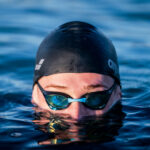Help, a cramp! Tips and remedies to deal with it
If you consistently practice sports, sooner or later you will have to come to grips with: the horrific cramp. A sudden pain with varying intensity, an involuntary spasm of the muscles that forces us to suspend activities, waiting for it to pass. The spasm can be shooting and unpleasant because it takes us by surprise and forces us to lock up.
Fortunately, it only lasts for a few seconds or a few minutes at best. It typically occurs during physical exertion but in other cases, it may occur a few hours later or while you’re sleeping. When swimming, the areas most likely to cramp up are the calf, the thigh, and the foot, which contract involuntarily. Sometimes dorsal and abdominal muscles may also be involved. But what triggers a cramp and how should you deal with it? Can you plan for it in advance?
Drink a lot of water to prevent them
One of the most common causes of cramping is due to poor hydration, often accompanied by an incorrect diet regime. When you are swimming, you don’t think about how important it is to drink (perhaps because you are already immersed in the water, but it isn’t the same thing!). As with any activity, if you sweat and lose fluids and mineral salts, you must reintegrate them into your system.
Dehydration manifests itself with signs such as low pressure, accelerated heartbeat, tight skin and white fingertips. Even without dehydrated, if you have low levels of electrolytes in your blood, you can run into problems with cramps and muscular spasms, sometimes accompanied by nausea, tiredness, and dizziness. So drink mineral water before, during and after your workout. In terms of nutrition, one of the best allies against cramping is the banana, rich in potassium. Other recommended foods are dried fruit, dark green leafy vegetables, milk, cheese, yoghurt, fish, eggs, and liver.
A gradual and steady workout is best
When you start swimming again after a long period of inactivity, your muscles may be weak and not respond properly. One of the most common consequences is the onset of cramps, according to the phenomenon of deconditioning or detraining. So you should start gradually, with a 5-10 minute warmup, combining pool activities with other training sessions, accompanied by stretching.
I have a cramp! Now what do I do?
If all of this isn’t enough and you’ve become the victim of the dreaded cramp, there are remedies you can take immediately to alleviate the pain, which can be unbearable.
First, it is recommended to massage the muscle and put a slight pressure on it to promote blood circulation. If you have a calf cramp, which is the most common among swimmers, you should stand up and bear down on the affected part. As we have said, the pain passes after a few seconds, but if you have repeated cramps with pain that just won’t pass, it is better to consult a doctor.
Pay attention to the fins
Fins are very useful but could cause calf cramps because of increased muscle tension. You should stretch before putting them on and swim the backstroke, starting with the short ones and gradually passing over to the long fins.
What should you do if you are swimming in the open sea?
We are never forewarned of cramps. It suddenly happens and can hit even when we are swimming in the open sea. Don’t panic! It is important that you don’t get caught unprepared; act quickly and decisively. If you get a cramp in your thigh, calf or foot, you should get in the water and stretch your limbs. As soon as the pain starts to get better, head straight to the shore, swim backstroke and rest.
Has this ever happened to you? How did you deal with the situation?
Tell us about your experience.







